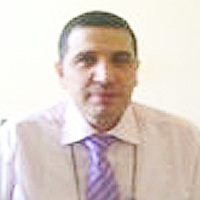Advancing Oral Health and Craniofacial Science through Microchip Implants
Published on: 25th April, 2024
Microchip implants have emerged as transformative tools in the realm of oral health and craniofacial science, offering novel solutions to longstanding challenges. This paper aims to explore the diverse applications of microchip technology in dentistry and craniofacial medicine, envisioning a future where these implants play a pivotal role in diagnostics, treatment modalities, and ongoing patient care. The integration of microchips enables real-time monitoring of oral conditions, facilitating early detection of dental issues and providing personalized treatment strategies. Additionally, these implants open avenues for smart prosthetics and orthodontic devices, optimizing patient comfort and treatment outcomes. However, ethical considerations, patient perceptions, and the societal impact of such technology should also be addressed. By examining the multifaceted implications and applications of microchip implants in oral health and craniofacial science, this research overview seeks to contribute valuable insights to the intersection of technology and healthcare in the dental domain.
Texture Analysis of Hard Tissue Changes after Sinus Lift Surgery with Allograft and Xenograft
Published on: 29th April, 2024
In the realm of dental surgery, implants are essential for replacing missing teeth. To facilitate implant placement, techniques such as bone grafting and sinus lifts are utilized to augment the volume of atrophied alveolar bone in candidates for dental implants. Typically, patients undergo a period of recovery following bone grafts before proceeding with implant placement. This study investigates the efficacy of Cone Beam Computed Tomography (CBCT) in measuring the residual bone volume and assessing bone quality after the healing phase. A texture analysis was conducted on CBCT scans from 42 patients requiring maxillary sinus lift reconstruction. These patients were categorized into two groups based on the type of grafting material used: Xenograft or allograft. The study analyzed the distribution of various texture parameters and conducted a Mann-Whitney U test to identify significant statistical differences between the groups. Results indicated non-normal distributions for specific variables such as Area_S(1,0) and S(1,0)SumOfSqs, while others like S(1,0)Entropy displayed normal distributions. The findings revealed no significant statistical differences in the primary outcomes between the xenograft and allograft groups. However, the average values of the gray shades of pixels in the allograft group were statistically significantly higher compared to the xenograft group, suggesting differences in bone texture post-procedure.
Custom Implants and Beyond: The Biomedical Potential of Additive Manufacturing
Published on: 17th May, 2024
Additive manufacturing, commonly known as 3D printing, is revolutionizing the field of biomedical engineering by enabling the creation of custom implants tailored to individual patient anatomy. This technology uses digital design files to layer-by-layer build structures from various materials, including biocompatible metals, polymers, and ceramics. In medical applications, this precision allows for the creation of implants that closely match the contours and geometries of a patient’s unique anatomical features, offering improved fit, functionality, and comfort compared to traditional, mass-produced implants. The potential benefits extend beyond just enhanced patient outcomes. With additive manufacturing, healthcare providers can reduce surgical times by designing implants that require minimal intraoperative modification. Moreover, the flexibility of this technology facilitates rapid prototyping and iterative design, enabling healthcare professionals to collaborate with engineers in refining implant designs before they are used in surgery. This iterative approach is particularly useful in complex cases, such as craniofacial reconstruction, where conventional implants may not adequately address the intricacies of a patient’s skeletal structure.
Procedure for Determining Root Canal Length in Endodontics: A Mathematical Approach
Published on: 15th July, 2024
Intraoral and extraoral radiographic investigations play a fundamental role in all dental disciplines. For endodontic treatment it is necessary, in addition to measuring with apex locators, also various radiographs in the preoperative, operative, and final control phase.Even in surgical practice, and especially in implantology, the radiographic investigation remains essential to limit errors or complications.The mathematical approach for the determination of the length of work in endodontics is a simple and costless procedure. This work intends to expose the reasons why it should, in certain cases, be taken into consideration.
Browse by Subjects
Chemistry Group Journals
Pharma Group Journals
Engineering Group Journals
Clinical Group Journals
- Archives of Food and Nutritional Science
- Annals of Dermatological Research
- International Journal of Clinical Microbiology and Biochemical Technology
- Journal of Advanced Pediatrics and Child Health
- Journal of Pulmonology and Respiratory Research
- Insights in Clinical and Cellular Immunology
- International Journal of Clinical Anesthesia and Research
- Journal of Clinical Intensive Care and Medicine
- Journal of Clinical, Medical and Experimental Images
- Journal of Neuroscience and Neurological Disorders
- Insights in Veterinary Science
- Archives of Asthma, Allergy and Immunology
- Journal of Child, Adult Vaccines and Immunology
- Archives of Cancer Science and Therapy
- Clinical Journal of Nursing Care and Practice
- Annals of Clinical Gastroenterology and Hepatology
- Journal of Hematology and Clinical Research
- Archives of Pathology and Clinical Research
- Annals of Clinical Hypertension
- Journal of Oral Health and Craniofacial Science
- International Journal of Clinical and Experimental Ophthalmology
- Journal of Radiology and Oncology
- Archives of Clinical and Experimental Orthopaedics
- International Journal of Bone Marrow Research
- International Journal of Clinical Virology
- New Insights in Obesity: Genetics and Beyond
- Advanced Treatments in ENT Disorders
- Journal of Clinical Advances in Dentistry
- Insights on the Depression and Anxiety
- Heighpubs Otolaryngology and Rhinology
- Clinical Journal of Obstetrics and Gynecology
- Archives of Surgery and Clinical Research




